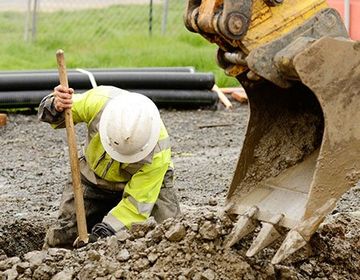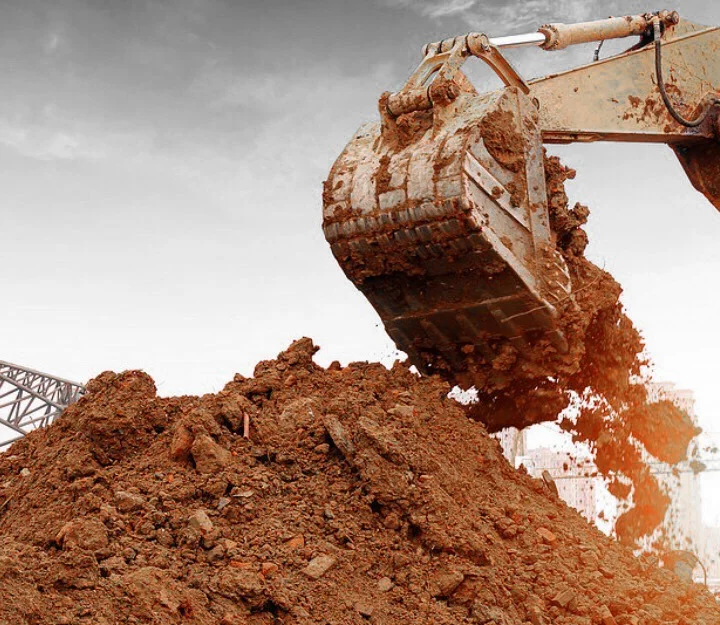Economical Lancaster Excavation - High Quality Excavation at Competitive Costs
Economical Lancaster Excavation - High Quality Excavation at Competitive Costs
Blog Article
Introducing the Art of Excavation: Pro Tips for Safe and Effective Excavating
As soil is transformed and earth is relocated, the complexities of excavation reveal themselves, demanding an eager understanding of equipment, soil structure, safety and security procedures, and ecological considerations. The knowledge required to navigate these aspects effectively can indicate the distinction between an effective excavation task and a potential calamity.
Importance of Appropriate Tools
To guarantee the safety and effectiveness of any type of excavation task, using the suitable tools is vital. Excavation projects vary in extent and intricacy, ranging from little residential landscaping work to large-scale building tasks.
Excavators are essential pieces of equipment in any kind of excavating operation. These flexible machines come in different dimensions to suit various job demands. Small excavators are suitable for smaller sized tasks, while larger excavators tackle more considerable tasks efficiently. Backhoes are one more necessary equipment kind, incorporating the features of a loader and an excavator in one device. They are valuable for tasks requiring convenience and ability to move.
Apart from excavators, various other important equipment consists of dump plates, trucks, and bulldozers. Unload vehicles are essential for removing and transferring excavated products, while plates are made use of for digging deep and narrow trenches. Excavators stand out in tasks that need pressing large quantities of soil or debris. By spending in the proper devices, excavation jobs can be finished safely, promptly, and with accuracy.
Comprehending Soil Make-up
A comprehensive grasp of dirt make-up is fundamental for performing excavation tasks with precision and security. Comprehending the various kinds of dirt is critical as it straight affects excavation methods, equipment choice, and general task efficiency. Soil composition normally includes 4 main components: sand, silt, clay, and organic matter. Each element has special homes that affect just how dirt responds to excavation procedures.
Sand fragments are the biggest and give excellent water drainage yet supply little communication. Silt bits are smaller sized than sand yet bigger than clay, offering moderate drain and communication. Clay bits are the tiniest and give high communication but bad drainage. Raw material, such as decomposing plant material, influences dirt fertility and stability.
Before commencing excavation, conducting dirt tests to identify its structure and qualities is crucial. This information aids in picking the ideal devices, implementing precaution, and developing excavation strategies customized to the details dirt problems - septic ohio. By recognizing dirt make-up, excavation experts can improve project end results while making certain safety and adherence to ideal techniques
Security Actions and Procedures
Understanding soil make-up is the foundation whereupon safety procedures and protocols for excavation jobs are constructed, guaranteeing the health of workers and the success of the venture. When it comes to security throughout excavation, there are several crucial actions that should be applied to mitigate dangers and prevent mishaps.
First and leading, before any excavating begins, a detailed inspection of the site should be conducted to recognize any kind of prospective risks such as underground energies, unstable dirt conditions, or close-by structures that might present a threat. It is crucial to have a proficient individual manage the excavation procedure to make certain that all safety procedures are complied with purely.
Furthermore, all employees included in the excavation must be appropriately learnt safe excavating methods and the appropriate procedure of tools. Personal protective devices (PPE) such as difficult hats, high presence clothing, gloves, and safety boots must be put on in any way times to decrease the danger of injuries. lancaster trenching. Regular safety and security meetings and toolbox talks must also be carried out to keep all workers notified regarding prospective dangers and enhance secure job techniques. By sticking to these security procedures and methods, excavation jobs can be finished effectively and without occurrence.
Efficient Excavation Preparation
When getting started on an excavation job, meticulous planning is important to ensure performance, safety and security, and effective end results. Effective excavation preparation includes numerous essential actions that are essential for the smooth implementation of the project.
When the website assessment is total, the following step is to develop a clear timeline and schedule for the excavation activities. This includes determining the series of tasks, devices demands, and manpower appropriation. Proper organizing assists avoid delays and guarantees that the job remains on track.

Moreover, interaction among all staff member is extremely important during the planning stage. Clear directives, routine updates, and efficient sychronisation are important for an effective excavation job. By spending effort and time in meticulous preparation, excavation groups can dramatically improve performance, decrease threats, and attain effective end results.

Taking Care Of Ecological Considerations
With increasing focus on environmental sustainability in construction techniques, handling environmental factors to consider has come to be a crucial aspect of excavation tasks. Excavation activities have the potential to affect the surrounding environment via soil disintegration, sediment overflow, habitat disturbance, and contamination of water sources. To mitigate these risks, it is important to apply finest methods that prioritize environmental management.

Moreover, appropriate waste administration is crucial to stop soil and water contamination. Executing procedures for the disposal of harmful products, recycling of waste materials, and lessening the usage of unsafe chemicals can significantly reduce the environmental influence of excavation tasks. By incorporating these techniques right into excavation planning and execution, construction companies can you could try these out ensure that their tasks are not just secure and efficient however also ecologically accountable.
Conclusion
To conclude, mastering the art of excavation calls for a comprehensive understanding of appropriate devices, soil structure, precaution, and reliable preparation. By complying with these standards and thinking about ecological factors, excavations can be conducted securely and successfully. It is essential to prioritize security and efficiency in every excavating job to make certain successful outcomes.
As soil is turned and planet is moved, the details of excavation disclose themselves, demanding an eager understanding of devices, soil make-up, security methods, and environmental factors to consider.To make sure the security and efficiency of any type of excavation project, using the appropriate tools is critical.An extensive grasp of dirt structure is basic for carrying this link out excavation projects with accuracy and safety. Comprehending the various types of dirt is essential as it straight affects excavation techniques, tools selection, and general task effectiveness. By comprehending dirt composition, excavation experts can boost project results while making certain safety and adherence to finest methods.
Report this page